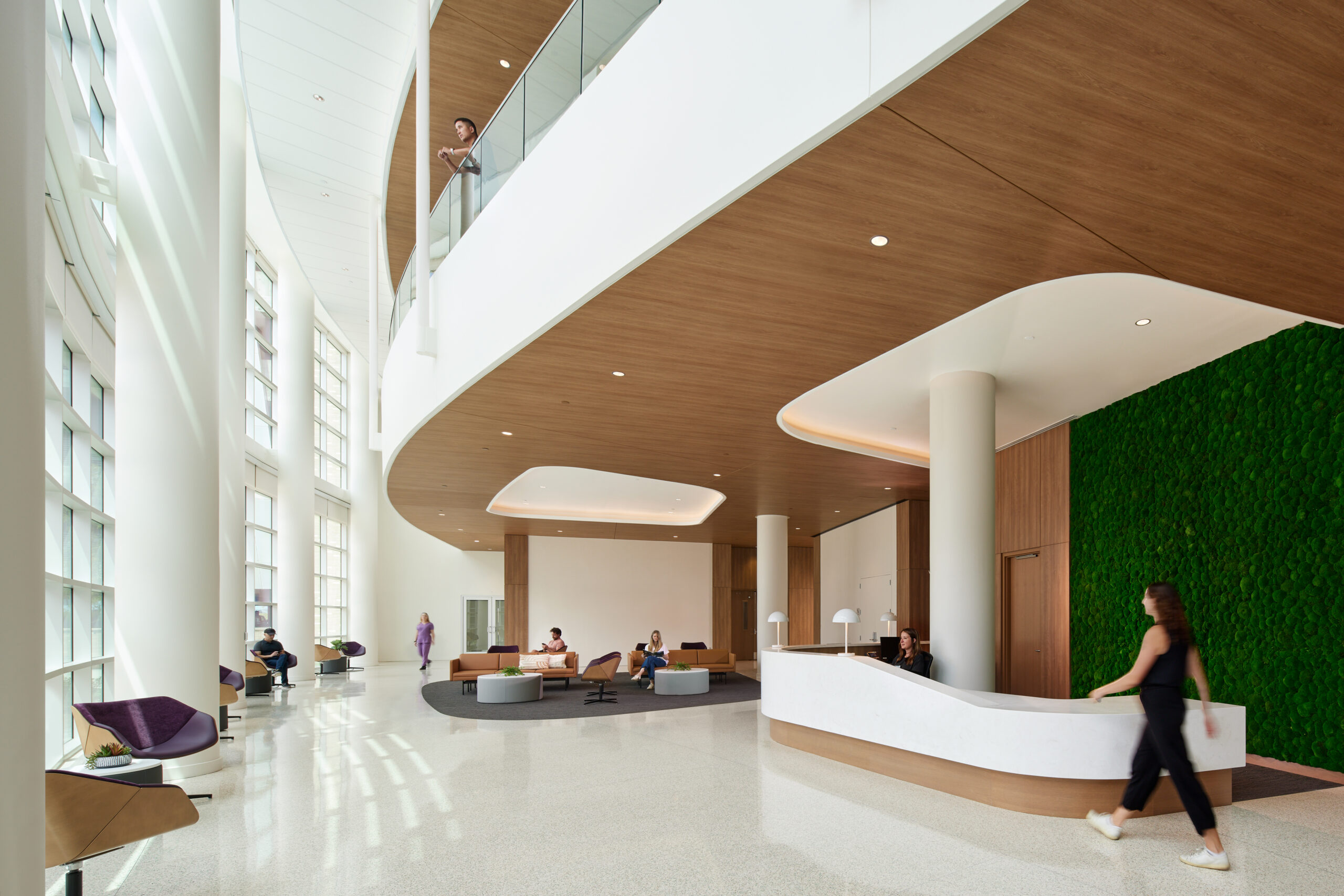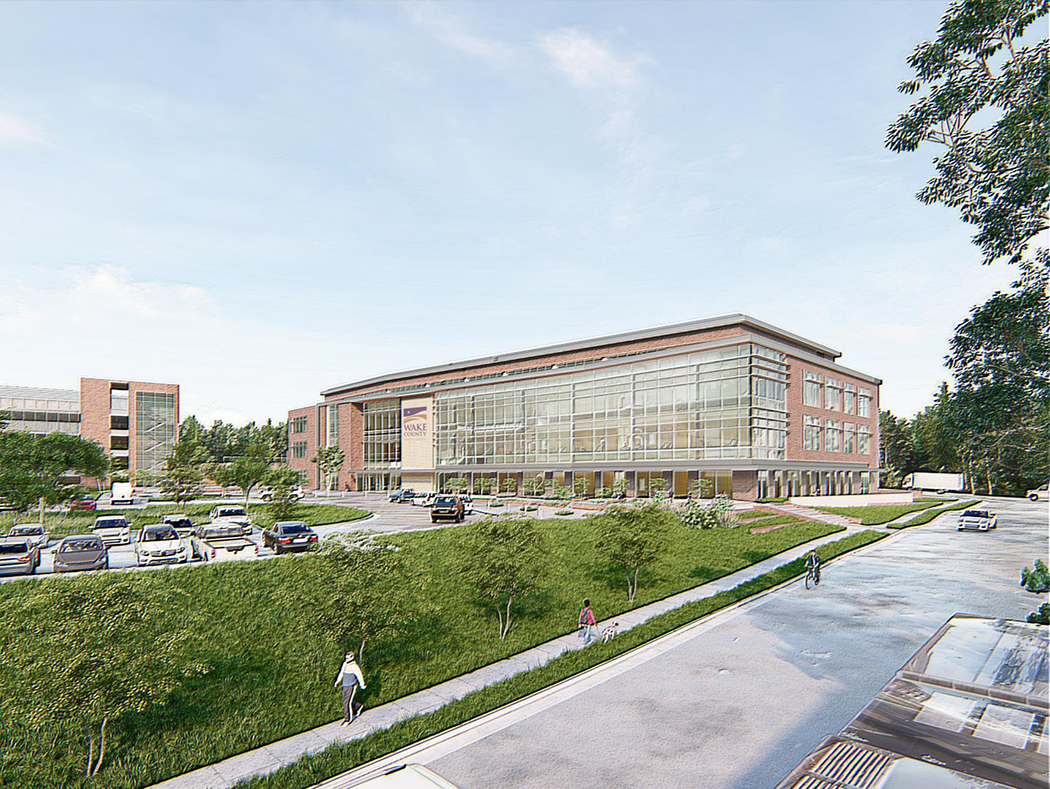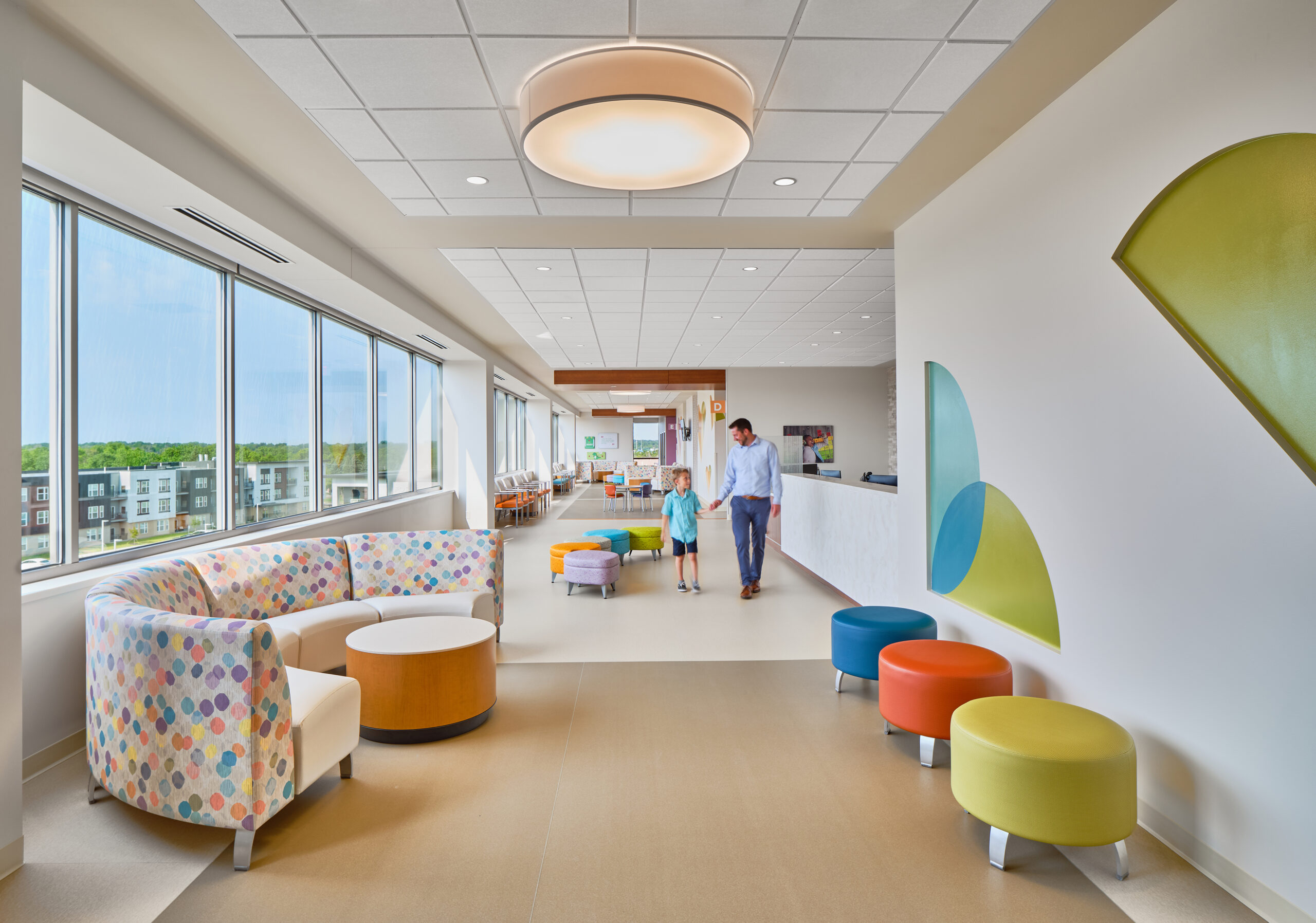By Roderick Allen and Tracey Franklin
Healthcare is moving toward a holistic approach to patient care that considers physical, mental and emotional well-being. From major bed towers to outpatient facilities to behavioral health facilities, there is growing recognition that community-centered and patient-focused design plays a vital role in enhancing the overall patient experience and outcome. Thoughtfully curated design elements such as familiar branding, community integration, and hospitality-inspired features can help reduce patient anxiety and build trust.
To create a successful patient-centric healthcare environment, consider these three key perspectives.
Brand and Hospitality
Branding goes beyond logos and color palettes; it establishes a healthcare system’s identity and personality and reinforces trustworthiness, compassion and quality care. Branding is about shifting the focus from solely treating illness to improving a patient’s journey from the time they enter a facility to the time they check out. Intuitive wayfinding, soothing palettes, and biophilic elements fused with hospitality create a cohesive narrative that alleviates anxiety and improves patients’ satisfaction and emotional wellbeing.
When implemented effectively, brands can create an environment that is safe, welcoming and familiar to patients. It reinforces consistency across all interactions in which every detail reflects the organization’s commitment to quality care. Patients feel they are cared for beyond just their medical needs in a holistic approach that promotes emotional and physical healing and human connection.
At Norman Regional Hospital expansion in Norman, Okla., HGA took inspiration from the region’s cultural heritage as well as architectural elements of the existing hospital to express a sense of place. The addition provides clear wayfinding with a single main entry drive for inpatient and outpatient services, leading to a light-filled public concourse with access to clinical functions and public amenities.
The design blends warm tones to build a thoughtful aesthetic. A hospitality-driven approach defines the interior finishes, featuring a sinuous light-filled lobby with living green walls behind the reception desk. The space is further enhanced by a serene indoor Healer Garden, a meditation chapel, and familiar purples, blues, and greens tones used in upholstery, accent walls and entry points to define different departments.
Community and Engagement

A deep understanding of the community is essential to shaping a meaningful patient experience. When appropriate, designers and healthcare providers should engage directly with the communities they serve to create facilities that feel approachable and authentic. Community engagement strategies through focus groups, town halls, surveys, and design-feedback sessions offer valuable insights that inform the planning process and provide a solid framework for project success.
The Santa Clara Valley Medical Center – Behavioral Health Services Center, in development in California, exemplifies this approach by integrating a soothing color palette, thoughtful art, and carefully considered finishes to foster a safe and inviting environment. HGA is working with the client to commission works from local artists to enhance the lobby, corridors and lounges. Additionally, artwork featuring medicinal plants added a meaningful layer of context, supporting healing and rehabilitation for individuals in mental health recovery.
Again, at Norman Regional Hospital, a patient-centered design approach incorporated input from staff, caregivers and the community. This strategy shaped the overall design, from the single-campus entry to the color palette and artwork, ensuring the hospital feels welcoming and regionally authentic. For instance, a central green space featuring native plantings greets guests at the main entrance, reinforcing a connection to the local landscape and creating a sense of place. A striking mural by artist Beatriz Mayorca on the parking garage wall showcases abstract representations of Oklahoma’s flora, further grounding the hospital to its surroundings.
Sustainability and Quality of Environment
Quality of environment is an important driver of a successful patient experience. Key factors to consider include daylighting and connection to nature, materiality and the reduction of toxic chemicals, and ambiance via lighting, acoustics and temperature.
SSM Health Dean Medical Group’s Specialty Service Clinic in Madison, Wis., established a baseline for sustainability to ensure community health and wellness. Throughout the design process, SSM Health and HGA prioritized environmental impact, carefully considering every detail—resulting in WELL v2 Pilot GOLD Certification.

The design focuses on indoor environmental quality through material selection; views of nature through floor-to-ceiling windows; minimal impact of emissions, noise and light pollution; outdoor spaces for patient and staff respite; and low-emission products that support healthy indoor air environment.
HGA also worked with SSM Health to establish a recycling program to minimize construction waste and reuse existing materials. Trees removed on the site were repurposed into veneers and other wood elements in the building. The clinic also features bird-safe glass.
Santa Clara Valley Medical Center – Behavioral Health Services Center similarly uses sustainable and biophilic strategies, such as high-performance materials and green walls in the main lobby; PVC-free resilient flooring; access to outdoor courtyards for both patients and staff (with the patient recreation yards featuring nature-inspired graphics); and potential nature-inspired graphics in other areas of the facility.
The Big Takeaway
Branding plays a crucial role in shaping hospitality-inspired healthcare environments that resonate with community values, but branding should be subscriptive rather than prescriptive. Providing a guiding framework rather than rigid rules allows a brand’s identity to flexibly reflect regional nuances without straying from the organization’s overall mission.
At its core, branding in healthcare conveys a commitment to quality care, reinforcing the connection between the organization and the community it serves. Thoughtfully integrated branding principles with hospitality-driven design, allows healthcare spaces to blend functional design embodying comfort, care, and a deep sense of belonging, while aligning seamlessly with the environment and sustainability, the community and the organization’s values.
Roderick Allen is a senior interior designer specializing in healthcare with HGA.
Tracey Franklin is a senior interior designer with HGA.






